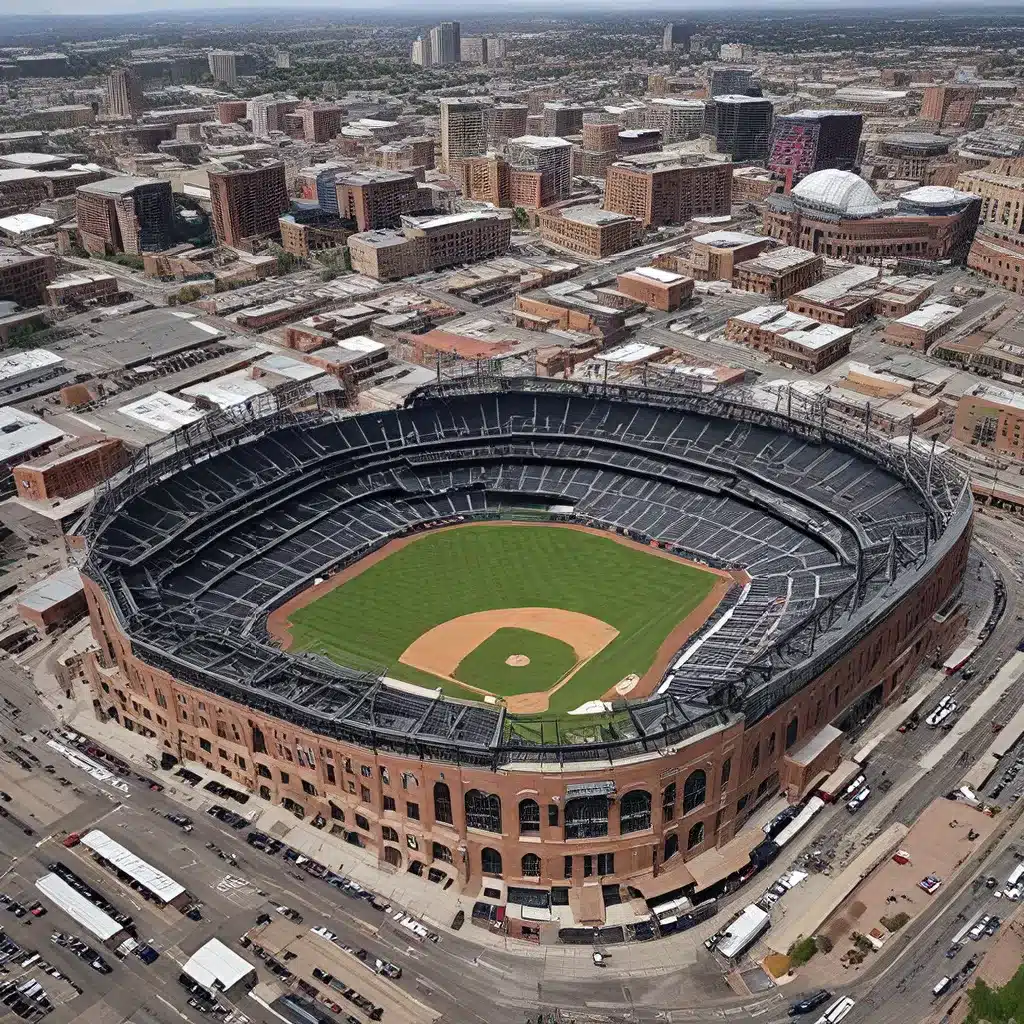
The Origins of a Colorado Icon
Coors Field, the home of the Colorado Rockies, has been a beloved landmark in the city of Denver for over a quarter of a century. Situated in the heart of the city, this iconic stadium has witnessed the triumphs and struggles of the Rockies franchise, as well as the evolving landscape of baseball in the Rocky Mountain region.
The story of Coors Field begins in the early 1990s, when the Rockies were established as an expansion team in the National League. As the team’s popularity grew, the need for a dedicated, state-of-the-art stadium became increasingly apparent. After much debate and planning, Coors Field was officially opened on April 26, 1995, marking a new era for baseball in Colorado.
The decision to build Coors Field was not without its challenges, however. The construction process was complex, with numerous logistical and financial hurdles to overcome. Jim Slade, a volunteer at the National Ballpark Museum, recounts the early days of the stadium’s development: “Major League Baseball came to Denver, and I along with the rest of Colorado were instantly Rockies fans. My family was season ticket holders in the early days at Mile High Stadium and then Coors Field.”
Architectural and Design Highlights
Coors Field’s architectural design is a testament to the vision and ingenuity of its creators. The stadium’s classic, retro-inspired aesthetic pays homage to the golden age of baseball, while incorporating modern amenities and features that enhance the fan experience.
One of the most striking features of Coors Field is its outfield backdrop, which features the majestic Rocky Mountains in the distance. This natural scenery, coupled with the stadium’s intimate seating layout, creates a one-of-a-kind atmosphere that has become a source of pride for Rockies fans.
The stadium’s interior design also boasts several notable elements, including the “Rooftop” – a popular gathering spot for fans that offers stunning views of the city skyline and the game itself. The Rockpile seating area, located in the upper deck, provides some of the most affordable ticket options in professional baseball, making the sport accessible to a wide range of fans.
The Rockies’ Storied History at Coors Field
Since its opening, Coors Field has played host to countless memorable moments in Rockies history. From thrilling playoff runs to individual player milestones, the stadium has served as the backdrop for the team’s journey through the highs and lows of professional baseball.
One of the most iconic moments in Coors Field’s history came in 2007, when the Rockies completed an improbable late-season surge to clinch a wild card berth and eventually reach the World Series. The team’s inspiring run captivated the city of Denver and solidified the stadium’s reputation as a place where dreams can come true.
However, Coors Field has also weathered its fair share of challenges over the years. The team’s performance has been inconsistent, and the stadium’s reputation as a “hitters’ park” has led to ongoing debates about the fairness of its playing conditions. Jensen Atwood, a brewer at Pure Project Brewing, notes that “The only day that I am not a Rockies fan is when the Cubs come to town. Growing up near Chicago, it is in my blood.“
The Ballpark’s Role in the Community
Beyond its significance as the home of the Rockies, Coors Field has also played an important role in the broader community of Denver. The stadium has hosted numerous events and activities throughout the year, including concerts, charitable initiatives, and community-oriented programs.
One such initiative is the Coors Field Gives Back program, which aims to support local nonprofit organizations and initiatives that improve the lives of Denver residents. Through this program, the Rockies and Coors Field have donated millions of dollars to various causes, cementing their commitment to the city and its people.
The stadium’s impact on the city’s economy cannot be overstated either. As a major tourist attraction and a hub for sports and entertainment, Coors Field has contributed significantly to Denver’s economic growth, generating jobs, tax revenue, and opportunities for local businesses.
The Future of Coors Field
As the Rockies and their fans look towards the future, the question of Coors Field’s long-term viability has become a topic of much discussion. The city of Denver has a rich history of embracing holiday traditions, and the future of Coors Field may well be tied to the team’s ability to adapt and evolve with the changing needs and preferences of its fanbase.
Ongoing debates around the stadium’s playing conditions, potential renovations, and the team’s overall competitiveness will undoubtedly shape the future of Coors Field. However, one thing remains certain: the stadium’s enduring legacy as a beloved and iconic landmark in the heart of Denver will continue to inspire and captivate baseball fans for generations to come.
As you plan your next visit to Denver, be sure to explore the rich history and unique experiences that Coors Field has to offer. From the breathtaking mountain vistas to the vibrant atmosphere of game day, this Colorado icon is a must-visit destination for any sports enthusiast or lover of the great American pastime.

